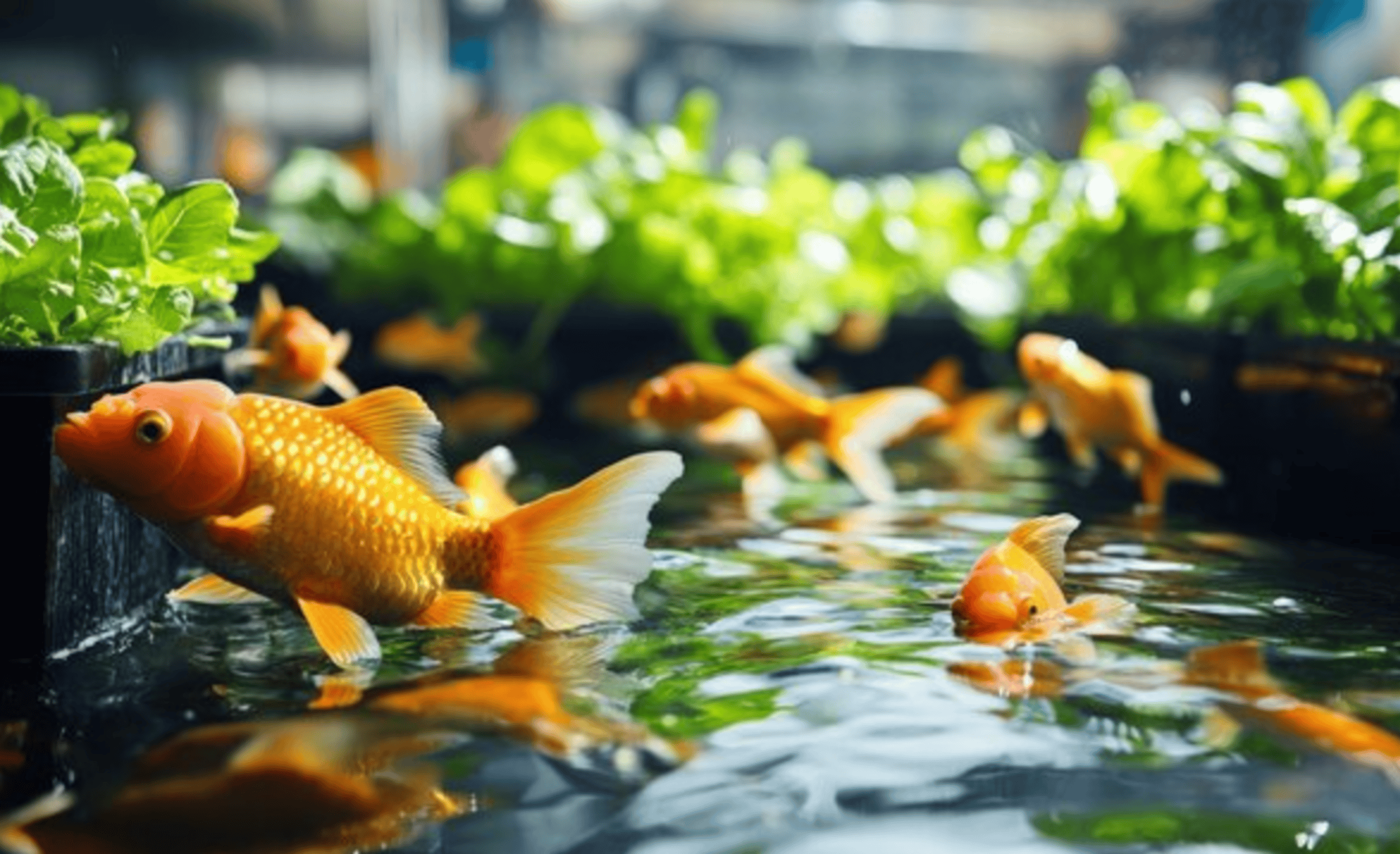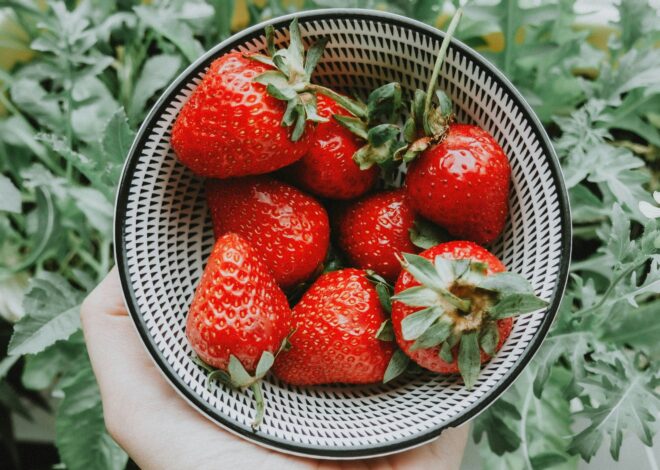
How To Build An Aquaponics System
Let’s explore how to build an aquaponics system from the ground up! Imagine a garden that not only grows your favorite vegetables but also thrives on the waste produced by fish. Welcome to the world of aquaponics, where nature’s symbiotic relationships come together in one sustainable system.
If you’ve ever wanted to cultivate fresh produce and raise fish simultaneously, you’re in for a treat! This innovative approach combines aquaculture (raising fish) with hydroponics (growing plants without soil). It offers an eco-friendly solution that minimizes water usage while maximizing yield.
Whether you’re a seasoned gardener or just starting out, building your own aquaponics system can be both fun and rewarding. Ready to dive into this exciting venture?
What is Aquaponics?
Aquaponics is a sustainable farming method that merges aquaculture and hydroponics into one efficient system. In simpler terms, it’s the art of growing plants and fish together in harmony. The fish provide nutrients for the plants through their waste, creating a natural fertilizer.
Meanwhile, the plants filter and clean the water for the fish, ensuring both thrive without any harmful chemicals. This closed-loop ecosystem mimics nature’s balance, making it an ideal choice for environmentally conscious growers. Aquaponics can be set up indoors or outdoors, on small balconies or large farms.
Whether you want to grow leafy greens or herbs alongside tilapia or goldfish, this versatile approach offers endless possibilities. It’s not just about food production; it’s about cultivating a deeper connection with nature while promoting sustainability!
Benefits of Aquaponics
Aquaponics offers a sustainable way to produce food. It combines aquaculture and hydroponics, creating a symbiotic environment where fish and plants benefit each other. This system uses less water than traditional farming methods. The efficient recycling of water minimizes waste while maximizing yields.
With aquaponics, you can grow fresh herbs, vegetables, and fish all in one place. This not only diversifies your diet but also leads to healthier eating habits. Pesticide use is significantly reduced or eliminated entirely in an aquaponics setup. This means cleaner produce for you and your family.
Another advantage is the reduced carbon footprint associated with transporting food over long distances. By growing locally, you’re contributing positively to the environment. It’s an educational tool that teaches about ecosystems and sustainability principles—perfect for schools or community projects.
Components of an Aquaponics System
An aquaponics system consists of several essential components that work together harmoniously. At the heart is the fish tank, which houses aquatic life. This tank serves as a nutrient source for your plants. Next comes the grow bed, where plants thrive by absorbing nutrients from water enriched with fish waste.
It’s crucial to select a suitable medium for plant growth—options include clay pellets or gravel. Water pumps are vital for circulating water between these two main components. They ensure that plants receive oxygen and nutrients while maintaining optimal conditions in the fish tank.
Don’t forget about filtration systems! These help remove solids and harmful substances, creating a healthy environment for both fish and plants. Aeration devices keep oxygen levels stable in the water, ensuring all inhabitants flourish. Each component plays a pivotal role in this sustainable ecosystem.
Step-by-Step Guide to Building an Aquaponics System
Building an aquaponics system can be an exciting venture. It combines fish farming with plant cultivation, creating a sustainable ecosystem.
Step #1: Choosing a Location for Your System
Selecting the right location for your aquaponics system is crucial. It can determine the success of your plants and fish.
Start by looking for a spot with ample sunlight. Most plants thrive under at least six hours of light daily. If natural sunlight isn’t sufficient, consider supplementing with grow lights.
Next, ensure easy access to water and electricity. A nearby water source helps maintain optimal conditions without hassle. Power is essential for pumps and aerators that keep everything running smoothly.
Ventilation plays a key role too. Good airflow prevents mold growth and keeps temperatures stable, benefiting both fish and plants alike.
Think about proximity to your home or workspace. Being close makes monitoring easier while adding convenience when it’s time to harvest or tend to your system’s needs.
Step #2: Gathering Materials and Equipment
Gathering materials and equipment is an exciting part of building your aquaponics system. Start with a solid plan in hand to ensure you acquire everything needed.
For the fish tank, consider using a large plastic container or a glass aquarium. The size depends on how many fish you want to raise. Ensure it’s durable and leak-proof.
Next, you’ll need grow beds for your plants. These can be made from various materials like wood or sturdy plastic containers. Make sure they are deep enough to support healthy plant growth.
Don’t forget about the pump! A reliable water pump circulates water between the fish tank and grow bed efficiently. You’ll also require tubing for connecting these components.
Grab some essential tools such as scissors, wrenches, and possibly even a drill if you’re constructing custom parts. With all these items ready, you’re one step closer to launching your aquaponics adventure.
Step #3: Setting Up the Fish Tank
Setting up the fish tank is a crucial step in establishing your aquaponics system. Begin by selecting a suitable tank that can accommodate your desired fish species. A standard size for beginners is around 50 to 100 gallons, offering ample space for both fish and plants.
Once you have your tank, place it on a sturdy surface. Make sure it’s level to avoid any potential leaks or spills. Rinse the tank thoroughly with water before filling it. Avoid harsh chemicals; they can harm the aquatic life.
Next, consider adding a filtration system to keep the water clean and oxygenated. You might also want to install an air pump with stones for extra aeration, benefiting both plants and fish alike.
Fill your tank with dechlorinated water and let it cycle for at least two weeks before introducing any fish. This ensures a stable environment where beneficial bacteria can thrive.
Step #4: Building the Grow Bed
Building the grow bed is a crucial step in your aquaponics system. This component will house your plants and provide them with the nutrients they need to thrive.
Start by selecting a suitable container. You can use plastic, wood, or even repurpose an old bathtub. Ensure it’s food-safe and waterproof.
Next, create a proper drainage system. Drill holes at the bottom for excess water to escape easily. This prevents root rot and keeps plant health in check.
Layering is essential too. Add gravel or expanded clay pebbles as a base layer for aeration and drainage. Then fill the rest with high-quality potting mix that’s rich in organic matter.
Don’t forget about accessibility! Make sure you can reach all parts of the grow bed without hassle for easier maintenance later on. Your plants will appreciate this thoughtful design once they start growing strong!
Step #5: Connecting the Two Components
Now it’s time to connect the fish tank and grow bed. This connection is vital for your aquaponics system to function effectively.
Start by using a durable pump that can handle the water flow from the fish tank to the grow bed. Position it carefully at the bottom of your tank, ensuring it’s secure and free from debris.
Next, attach flexible tubing or PVC pipes to guide water from the pump into your grow bed. Make sure these connections are tight to prevent leaks.
Consider adding a valve in this setup. It allows you control over water flow, giving you flexibility in managing both components.
Once everything is connected, test the system by turning on the pump. Observe how well water flows into your grow bed and adjust as needed. This step ensures that nutrients circulate efficiently between plants and fish.
Step #6: Adding Plants and Fish to Your System
Once your aquaponics system is fully set up, it’s time to introduce plants and fish. Choose fish that are suitable for beginners, such as tilapia or goldfish. They adapt well to various conditions and thrive in smaller tanks.
When adding fish, acclimate them slowly. Float the bag containing the fish in your tank for about 15 minutes before releasing them. This helps prevent shock from temperature changes.
For plants, consider leafy greens like lettuce or herbs such as basil and mint. These grow quickly and flourish in an aquaponic environment. Start with seedlings instead of seeds for quicker results.
Place the seedlings gently into the grow bed media. Ensure their roots have good contact with water but are not submerged entirely. This balance promotes healthy growth while allowing access to nutrients filtered from the fish waste.
Maintaining and Harvesting from Your Aquaponics System
Maintaining your aquaponics system is essential for its success. Regular monitoring of water quality is crucial. Check pH levels, ammonia, nitrite, and nitrate concentrations to ensure a balanced ecosystem. Feeding your fish properly also plays a critical role.
Use high-quality fish food in appropriate amounts to avoid waste buildup. Observing their behavior helps you gauge if they’re well-fed or stressed. When it comes time to harvest plants, do so carefully. Harvesting herbs regularly encourages bushier growth.
For larger crops like lettuce or tomatoes, cut them at the base while leaving enough stem for regrowth. Fish can be harvested when they reach the desired size. Ensure you have everything prepared for storage and cooking beforehand to maximize freshness.
Keep an eye out for pests or diseases that might affect either plants or fish. Early detection allows you to take action before problems escalate and safeguards your entire system’s health.
Potential Challenges and Solutions
Building an aquaponics system can be rewarding, but it doesn’t come without challenges. One common issue is water quality. Fish need clean water to thrive, and fluctuations in pH or ammonia levels can harm them. Regular testing and adjustments are crucial for keeping the ecosystem balanced.
Another potential hurdle is choosing compatible fish and plants. Not all species work well together, which may lead to poor growth or fish stress. Researching your options ahead of time can save you from this pitfall. Pests and diseases can also invade your system unexpectedly.
Integrated pest management techniques will help mitigate these risks organically while maintaining a healthy environment. Technical malfunctions such as pump failures might arise. Consider investing in backup systems or alarms to alert you when something goes wrong so that quick action can be taken before significant damage occurs.
Final Thoughts: Building an Aquaponics System
Building an aquaponics system can be a rewarding endeavor. It combines the joy of gardening with the satisfaction of raising fish, creating a sustainable ecosystem right in your backyard or home. The process involves careful planning and attention to detail, but the benefits are well worth it.
As you embark on this journey, remember that patience is key. It may take time for your system to stabilize and flourish. However, once everything is up and running smoothly, you’ll enjoy fresh produce and healthy fish without harmful chemicals.
Don’t hesitate to experiment with different plants and fish species as you learn what works best for your specific environment. Share your successes—along with any challenges—and connect with other aquaponics enthusiasts for tips and support.
With dedication and creativity, building an aquaponics system can transform how you think about food production while contributing positively to the environment around you. Embrace this innovative approach to sustainability; it might just change your life in more ways than one!




This guide on building an aquaponics system is incredibly detailed and inspiring. It offers practical steps and tips that make setting up an aquaponics system feel achievable, even for beginners. The way it combines sustainability with the joy of growing your own food and raising fish is quite motivating. I’m particularly curious about the compatibility between different fish and plant species, as you mentioned this can sometimes be a challenge. Are there specific resources or guidelines to help beginners choose the best fish and plant combinations for optimal growth and system health? Additionally, how often should one test the water parameters to maintain a stable ecosystem? Thank you for this informative guide!
Hello Amalthe,
Thank you for stopping by today and sharing your thoughts on how to build an aquaponics system. I’m glad that you found the information in our guide useful and I hope that you give it a try. Building an aquaponics system is easy if you follow our step-by-step instructions.
I will be including an aquaponics guide in the near future that covers everything you need to know about different fish species that are compatible with different plants. And as far as maintaining a stable ecosystem for your fish tank. I would monitor it at once or twice a week.
Maintaining a stable ecosystem is crucial for your success so pay close attention to what’s going on with your aquaponics system and you will enjoy the fruits of your labor for years to come. Please come back and share your experience with us once you get your aquaponics system up and running,
Best wishes,
I like the way that you combine fish farming (aquaculture) and plant cultivation (hydroponics) in a self-sustaining system. This creates a reliable, year-round food source. The fish provide nutrients for the plants, and the plants help filter and purify the water for the fish. This system is efficient in water and saves space. Definitely an innovative approach to self-sufficiency!
How large of a system would you need for a family of 6?
Hello Don1,
Thanks for stopping by and sharing your thoughts on our article today. Building an Aquaponics System is as easy as it gets as long as you follow our step-by-step guide in our blog post. I have a 200 gallon tank and it sustains my wife and I just fine. We also have a garden and grow other crops as well.
We live in the Appalachian mountains and the soil is great for growing your own garden. Anyways, In order to feed a family of six, you would have to have a much larger Aquaponics System than I have. You can follow these same steps and build an outdoor Aquaponics System building or utilizing an existing small pond.
Now if you choose to build an Aquaponics System outside, they’re are lots of things to consider such as the climate you live in and seasonal weather. You may also need to consider building a green house around your outdoor Aquaponics System. So ahead and give it a try and let me know how things turn out.
Best of luck,